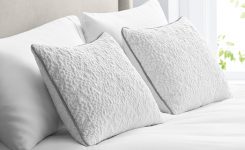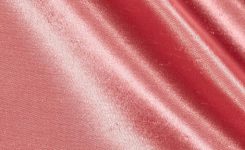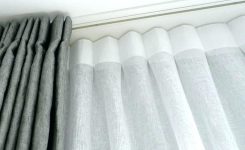BLOG, Fabric
Fabric Composition
WOOL fabric brings to mind cozy warmth. Some wools are scratchy giving some people the idea that they are “allergic” to wool. Although wool fibre comes from a variety of animal coats, not all wools are scratchy but some can be extremely soft. The wool fibre have crimps or curls which create pockets and gives the wool a spongy feel and creates insulation for the wearer. The outside surface of the fibre consists of a series of serrated scales which overlap each other much like the scales of a fish. Wool is the only fibre with such serration’s which make it possible for the fibers to cling together and produce felt. The same serration’s will also cling together tightly when wool is improperly washed and shrinks! Wool will not only return to its original position after being stretched or creased, it will absorb up to 30% of its weight in moisture without feeling damp. Its unique properties allow shaping and tailoring, making the wool the most popular fabric for tailoring fine garments. Wool is also dirt resistant, flame resistant, and, in many weaves, resists wear and tearing. Basically, there are two different processes used in wool production. Woolen fabric have a soft feel and fuzzy surface, very little shine or sheen, will not hold a crease, and are heavier and bulkier than worsteds. Blankets, scarves, coating, and some fabrics are considered woolens. Worsted wool is smoother than woolen, takes shine more easily, does not sag, holds a crease well, is lighter and less bulky, and wears longer than woolen. Worsted wool’s require a greater number of processes, during which fibers are arranged parallel to each other. The smoother, harder-surface worsted yarns produce smoother fabrics with a minimum of fuzziness and nap. Fine worsted wool is even seen in clothing for athletics such as tennis. No, they are not hotter than polyester but actually cooler, as the weave of the fabric allows wool to absorb perspiration and the fabric “breathes,” unlike polyester. WOOL SPECIALTY FIBERS, although still classified as wool, are further classified by the animal the fiber comes from.
COTTON, cool, soft, comfortable, the principal clothing fiber of the world. Its production is one of the major factors in world prosperity and economic stability. Cotton “breathes”. What would we do without cotton? Since cotton wrinkles, polyester was added to give it wash and wear properties for a busy world. In recent times, the consumer determined that polyester, although easier to care for, took away the cool from cotton and also added a “pilling” effect to cotton/polyester blends. Consumers now often request “100% Cotton”. Permanent finishes also added to the all cotton fabric gave a wash and wear property to cotton. cotton. The cotton fiber is from the cotton plant’s seed pod The fiber is hollow in the center and, under a microscope looks like a twisted ribbon. “Absorbent” cotton will retain 24-27 times its own weight in water and is stronger when wet than dry. This fibre absorbs and releases perspiration quickly, thus allowing the fabric to “breathe”. Cotton can stand high temperatures and takes dyes easily. Chlorine bleach can be used to restore white garments to a clear white but this bleach may yellow chemically finished cottons or remove colour in dyed cottons. Boiling and sterilizing temperatures can also be used on cotton without disintegration. Cotton can also be ironed at relatively high temperatures, stands up to abrasion and wears well.
Mercerized cotton is treated to permanently straighten the cotton fibre which then becomes a smooth, rod-like fiber that is uniform in appearance with a high lustre. Cotton is often blended with other fibre such as polyester, linen, wool, to “blend” the best properties of each fibre.
SILK, the fabric that makes its own statement. Say “silk” to someone and what do they visualize? No other fabric generates quite the same reaction. For centuries silk has had a reputation as a luxurious and sensuous fabric, one associated with wealth and success. Silk is one of the oldest textile fibere known to man. It has been used by the Chinese since the 27th century BC. Silk is mentioned by Aristotle and became a valuable commodity both in Greece and Rome. During the Roman Empire, silk was sold for its weight in gold.
LINEN, elegant, beautiful, durable, the refined luxury fabric. Linen is the strongest of the vegetable fibre and has 2 to 3 times the strength of cotton. Linen table cloths and napkins have been handed down generation to generation. Not only is the linen fibre strong, it is smooth, making the finished fabric lint free. Fine china, silver and candles are enhanced by the lustre of linen which only gets softer and finer the more it is washed.
Linen is from flax, a fibre taken from the stalk of the plant. The lustre is from the natural wax content. Creamy white to light tan, this fibre can be easily dyed and the colour does not fade when washed. Linen does wrinkle easily but also presses easily. Linen, like cotton, can also be boiled without damaging the fibre.








1 Comment
A WordPress Commenter
Hi, this is a comment.
To get started with moderating, editing, and deleting comments, please visit the Comments screen in the dashboard.
Commenter avatars come from Gravatar.